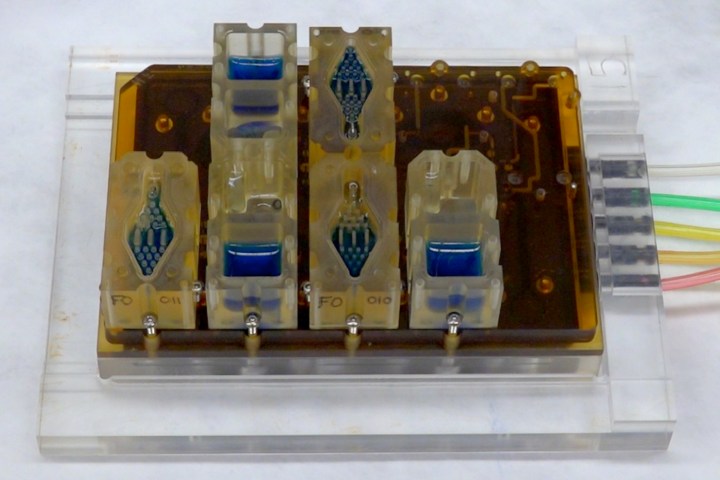
In fact, it’s a new research project coming out of Northwestern University, where scientists recreated a female reproductive system in a box. Called Evatar, it goes one step further than the previous “organ on a chip” concepts used to test specific organ responses to certain drugs by creating an entire bodily system. That includes living tissues from a mouse ovary, as well as those from a human uterus, cervix, vagina, fallopian tubes, and liver — all of which communicate with one another using a state-of-the-art microfluidic platform.
“This system runs for a period of 28 days, which is the length of a woman’s menstrual cycle,” Julie Kim, Susy Y. Hung Associate Professor of Obstetrics and Gynecology at Northwestern, told Digital Trends. “The ovary provides human menstrual cycle level hormones — 14 days of estrogen, ovulation and 14 days of progesterone — that then stimulates the fallopian tube, uterus, cervix and liver. This is the world’s first multi-organ system in a dish that remains functional for a full menstrual cycle.”
Compared with the male-centric drug testing of previous decades, Evatar is designed to give scientists a better understanding of the way in which various medicines and/or toxins affect women. This means testing aspects of drugs which may not affect men, such as whether they will affect ovarian function.
As Kim noted, “There are well-established sex differences of drug responses that are usually not known until women take the drug and experience adverse effects.”
Right now, the project has reached the end of its first phase. Next up, the team wants to work on incorporating models of diseases that affect the female reproductive tract, such as uterine fibroids, endometriosis, and cancer.
“As I was responsible for the uterus portion of Evatar, I would like to add other important components of the lining of the uterus such as blood vessels and immune cells that work in concert with the cell types currently in our system,” Kim said. “This would allow us to potentially study complex processes such as menstruation and test compounds for disorders including heavy uterine bleeding that affect women. Also, we are interested in generating specific cells of the reproductive tract from stem cells in order to provide a system that is more personalized.”
And men shouldn’t get too worried, either, as a male version of Evatar — called Adatar — is also on the way. consisting of cells from the male reproductive tract.
“So lots more to do,” Kim said.


